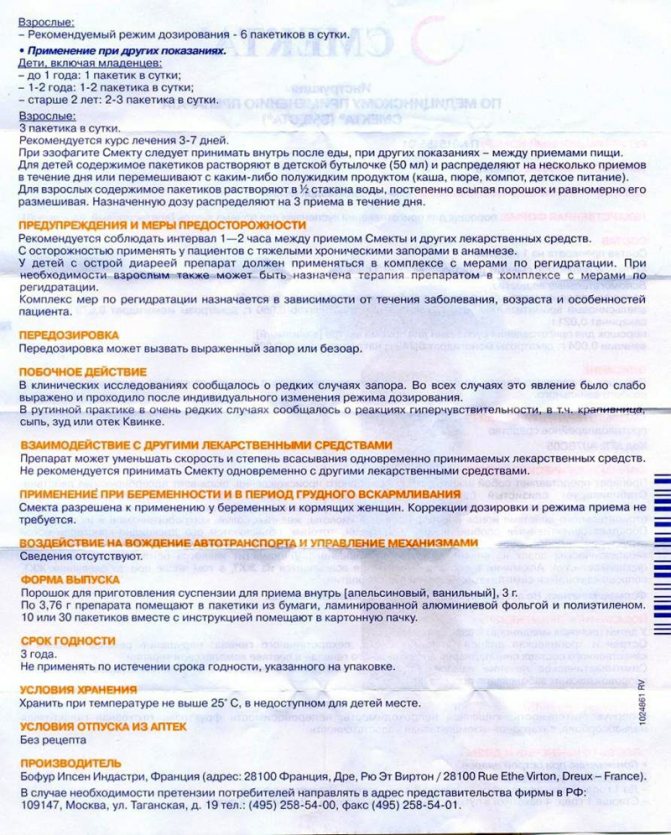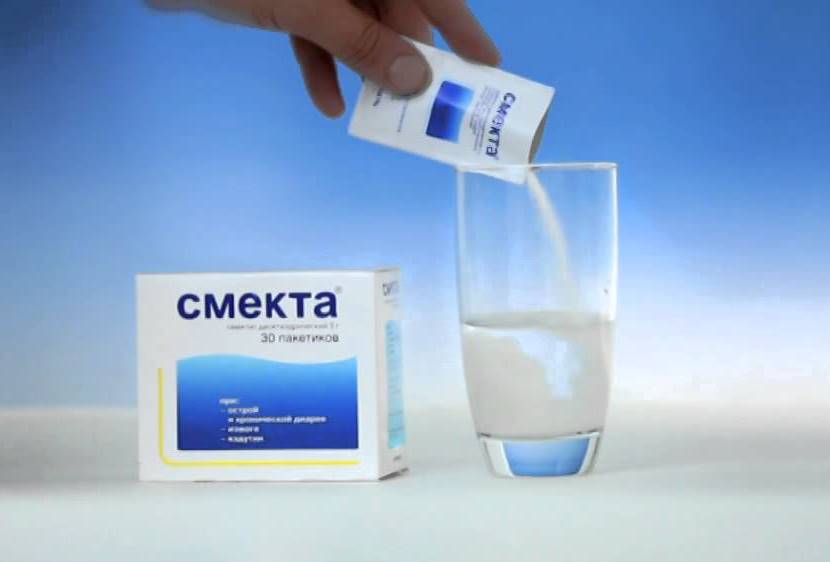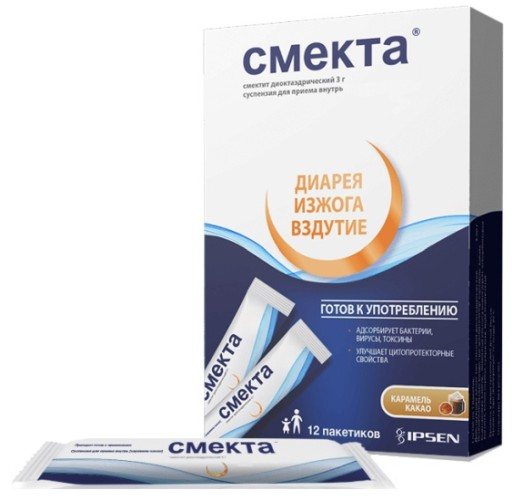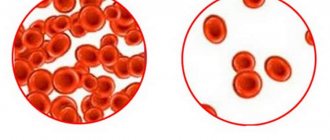Taking any medication is an exciting topic for nursing mothers, since it is rarely possible to determine with certainty how a particular medication will affect the quality of breast milk. Is it possible to continue feeding a child if the doctor has prescribed any medication?
There are often cases when medicine must be used, because the lack of help will entail serious consequences for the woman’s body, weakened by childbirth. Heartburn is one of the most common symptoms with which pregnant women and nursing mothers consult a doctor. Most often, in such cases, doctors prescribe smecta, which has been tested by time and experience.
But is smecta safe while breastfeeding? Mom - instructions, doctors - diagnosis and correction of the drug. If all standards are followed, complications should not arise.
Action of smecta
The list of indications for taking smecta is wide: from bloating to severe intestinal poisoning. Diarrhea, diarrhea, dysentery, heartburn, cholera, vomiting - for any of these symptoms, the drug can be prescribed in different quantities.
Smecta is a type of medicine that restores the functioning of the gastrointestinal tract and stabilizes the functioning of the mucous membrane even in cases of severe poisoning (for example, as a result of consuming low-quality or expired food) or intestinal infections.
This drug is able to block any virus and remove it from the body naturally through stool, without causing additional pain. The intestines are cleared of viruses, the feeling of nausea disappears, vomiting and colic disappear.
Indications for use

Smecta is used to treat nursing mothers, since this drug does not pass into milk and is a completely safe remedy. Diosmectite is adsorbed in the lumen of the gastrointestinal tract, is not absorbed by the body at any stage of digestion and is excreted unchanged.
When breastfeeding, many women suffer from diarrhea, bloating, and intestinal irritation, and Smecta quickly and effectively eliminates such symptoms. Diosmectite forms polyvalent bonds with glycoproteins (components of the mucous membrane). This increases mucus secretion, stabilizes its properties and eliminates irritation. The medicine has a mild effect on the body and does not affect the motility of the gastrointestinal tract.
When breastfeeding, it is allowed to use Smecta for the following symptoms:
- The drug is prescribed for acute and prolonged diarrhea of non-infectious origin. Diosmectite forms a protective shell and relieves irritation. It also protects the intestines from toxins, bacteria, and food irritants.
- Heartburn - often appears due to a change in the mother's diet after childbirth. Diosmectite reduces acidity and protects the gastric mucosa.
- For the same reasons, the drug is prescribed by a doctor for exacerbation of gastritis or gastroduodenitis.
- You can take Smecta to treat flatulence, bloating and any other symptoms of dyspepsia that occur during breastfeeding.
- The drug is indicated for intestinal infections as an element of complex therapy. Smecta has a selective sorption effect: the powder adsorbs bacteria and viruses.
[adsp-pro-3]
Important! The medicine does not affect the intestinal microflora, as it does not absorb microelements, vitamins, or enzymes.
Composition of the drug
Smecta is a widely known antidiarrheal drug, attractive because it is of natural origin. The composition of different types of smects contains a substance obtained from porous clay, which has an absorbent effect. Due to the fact that the basis of the drug is a natural substance, the use of smecta while breastfeeding should not harm the nursing mother.
The medicine is a white powder (gray-white or coffee-white colors are possible) with a faint orange or vanilla odor. The drug tastes good and does not cause a gag reflex. Among non-natural substances, smecta may include flavorings (vanilla or orange) and sodium saccharinate.
How to take Smecta correctly when breastfeeding
Many medications should not be taken during breastfeeding. Conventional drugs pass into the milk and are thus passed on to the baby. Accordingly, a nursing mother is either given medications that are not absorbed into the blood, or the woman refuses to feed the baby during treatment.
Smecta is used during breastfeeding to treat gastrointestinal diseases, as it belongs to the category of enveloping drugs.
The drug is produced in the form of a grayish or yellowish powder.
Smecta during lactation. Instructions for use
The action of the drug is similar to that of activated carbon - a sorbent. The use of smecta is approved by pharmacists and doctors around the world, since a small dosage of the drug does not affect intestinal motility and stool quality, and does not cause symptoms characteristic of colonopathy and colitis. An adult can take approximately six smecta sachets per day; the dosage for children varies depending on the symptoms, diagnosis and age of the child.
Approximately, an infant can take no more than two sachets per day during exacerbation of the disease and no more than one sachet when symptoms weaken. Children aged one to two years can safely take two packets per day, and children over two years old can take three packets.
The standard course of treatment lasts up to a week. Doctors recommend taking the drug either strictly after meals or between small meals. Any doubts regarding the procedure for taking the medicine will be resolved by the instructions for the drug or consultation with the attending physician.
The dosage of application in relation to absorption medicine may vary, especially when prescribing smecta. Instructions for use for diarrhea, heartburn, diarrhea and other symptoms in adults during lactation are a mandatory item in the application for use of the drug. Nursing mothers are advised to thoroughly read the instructions for the drug.

The regimen for taking smecta during breastfeeding is specifically prescribed in the instructions for the drug. A pregnant woman and a nursing mother can take no more than three sachets of the drug in the first three days of treatment, and with the gradual disappearance of disturbing symptoms, reduce the amount of smecta to one or two sachets per day. Exceptions are possible: in case of acute diarrhea, breastfeeding often does not prevent the doctor from prescribing up to six sachets of the drug per day. With proper correction of the medication, lactation in a nursing mother should not be disrupted.
The rules for preparing the suspension are very simple: you need to dissolve the contents of one sachet in 125 ml of warm (never hot) water.
It is strictly not recommended to use warm water that has not undergone heat treatment; it must be diluted only with boiled liquid.
One sachet contains 3 grams of the drug. After pouring the powder into a glass, you need to gradually fill it with water, stirring constantly. This will eliminate the risk of lumps forming. Storing an already prepared solution for more than a few hours is contraindicated; It is best to dilute the drug immediately before taking it.
If the drug is used incorrectly, overdose or the treatment cycle is interrupted, a number of side effects may occur - constipation or bezoar. Most often, this problem is easily solved by consulting with the attending physician, who adjusts the order of administration and the required dose of the drug.
Allergies can be caused by taking smecta extremely rarely. If it occurs, then its manifestations are possible: itching, rash, urticaria and Quincke's edema (extensive swelling of the skin, extremely dangerous). If any of these symptoms appear, you must immediately stop using the drug and consult your doctor to avoid complications.
If there is a suspicion of an allergic reaction in advance, then the doctor may prescribe a domestic analogue of the drug, which, as a rule, will be much more affordable. In Russia, the most common are enterosgel, enterofuril, polyphepan, enetfuril.
The most popular analogue of smecta for a nursing mother is enterosgel, which can be prescribed even to pregnant women. At the same time, enterosgel is much weaker than smecta, so in case of the most severe intoxications, doctors prescribe a range of drugs in addition to it.
Features of taking the drug during breastfeeding
A woman should carefully study Smecta’s instructions before using it directly. The drug can be used to improve the functioning of the digestive system during lactation. Nursing mothers should follow the dosage exactly. Otherwise, the risk of harm to the baby’s body increases.
We recommend reading: Duphalac during breastfeeding and reviews about it
The drug must be taken one hour before meals. It is also possible to use the medicine an hour after eating.
At least two hours should pass between two doses.
To treat poisoning, it is allowed to drink no more than six sachets per day.
The course of treatment depends on the individual characteristics of the body and should not exceed seven days.
Smecta is made from natural ingredients. That is why it is allowed to drink during pregnancy and lactation.
This will not have a negative effect on the child’s body.
The drug cannot penetrate into the blood and breast milk. It affects exclusively the mucous membrane of the intestines and stomach. To date, there have not been any cases of allergies in mothers or children. Despite all the benefits, you should consult your doctor before using the medicine.

Smecta will restore normal stool
Smecta is a drug that has a number of contraindications. A woman is advised to familiarize herself with them before using it.
The medicine helps a woman get rid of:
- colic in the intestines;
- severe heartburn that occurs after eating;
- removes gases naturally;
- eliminates infection from the intestines;
- comprehensive elimination of problems with the digestive system;
- normalization of stool.
You should avoid taking Smecta in the following cases:
- presence of allergies to the components of the drug;
- production of insufficient amounts of enzymes;
- there is an obstruction in the intestines;
- The body cannot absorb fructose.
Contraindications
The drug is contraindicated for patients suffering from glucose-galactose malabsorption syndrome, intestinal obstruction, fructose intolerance, hypersensitivity to individual components included in the drug (it is necessary to read the instructions).
Since smecta is a fairly strong drug, doctors do not recommend taking it simultaneously with other medications, since smecta powder can affect the body's absorption of other drugs. If you combine several types of treatment, you should consult your doctor.
Taking smecta during lactation should be stopped immediately if any changes occur in the health status of the nursing mother or baby. It is also recommended to stop using the drug and consult a doctor if there is no improvement after taking the medicine for two to three days.

Admission rules
For adults, one sachet is diluted in half a glass of water. For children, Smecta is diluted in 50 ml of water or mixed with a semi-liquid product (baby food, compote, etc.). Should be taken between meals, and for esophagitis (disease of the esophagus) - after meals.

Smecta dissolves easily and quickly in water
Dosage
For acute diarrhea, adults are recommended to take five sachets of powder per day. For infants up to one year old, two sachets every day for 3 days, then one sachet per day. Children over 1 year old need to take four sachets per day for 3 days, then two sachets per day.
For other indications:
- adults are prescribed 3 sachets per day;
- children under one year of age: 1 sachet per day;
- at the age of one to two years, 1–2 sachets per day;
- over two years - 2-3 sachets per day.
The recommended course of treatment is 3–7 days. If after three days of using the drug the symptoms do not disappear, you should consult a doctor.
To be or not to be a sorbent?
Smecta during breastfeeding can be absolutely safe if properly diagnosed and properly prescribed the drug. A nursing mother and infant should be under constant medical supervision so that in case of complications of the disease or the appearance of new symptoms in the mother or child, treatment can be adjusted or completely canceled in time.
An independent decision to take any drug not only during pregnancy and lactation, but also in the normal state of the body can lead to complications of the disease. To avoid this, you need to adhere to the diet of a nursing mother.
Can Smecta be used while breastfeeding?
Not all medications can be taken during breastfeeding. This is due to the fact that medications can pass into mother's milk and harm the baby. Smecta during breastfeeding is successfully used to treat digestive disorders and relieve heartburn, as well as bloating and abdominal pain. The drug is approved for use by women during pregnancy, nursing mothers and infants from birth.
- Indications for use
- Contraindications
- Side effects
- Dosage and method of use
- Features of use
- Conclusion
The active ingredient of Smecta, dioctahedral smectite, is a specially processed mixture of magnesium and aluminum silicates. Once in the esophagus, the active substance envelops the mucous membranes of the gastrointestinal tract, protecting them from the aggressive effects of gastric juice, and also absorbs toxins of any origin and removes them along with feces.

Smecta is not absorbed in the intestines, does not enter the systemic circulation and does not pass into breast milk. That is why it does not pose a danger to a small child who is breastfed.
The drug is approved for use by women during pregnancy, nursing mothers and infants from birth.










